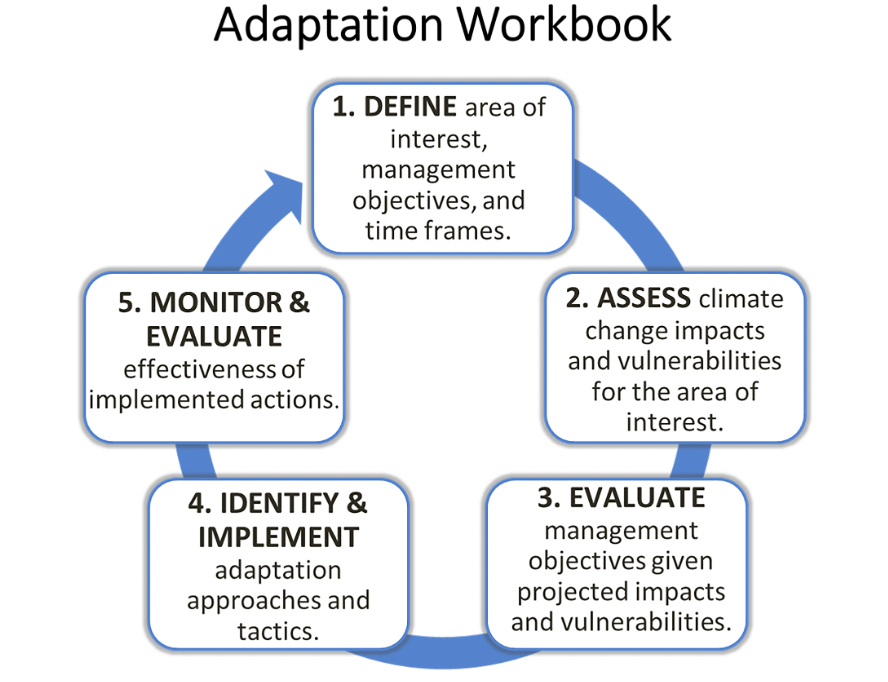Read the full article by Longman et al. here
Tropical island ecosystems are highly vulnerable to the multiple threats of climate change (Nurse et al. 2014; Bonan 2008). In response, agencies and organizations are tasked with developing land-management strategies to help ecosystems adapt to changing environmental conditions (Swanston et al. 2016). Research has shown that proactive planning can reduce climate change impacts by facilitating more efficient and rapid responses (Bierbaum et al. 2013). Complex socio-ecological conditions, environmental change related stressors (e.g., wildfire, pests, disease, and drought), a lack of resources, and shifting public policy and agency mandates (Nagel et al. 2017) can all hinder response effectiveness (Crausbay et al. 2020). Despite these challenges, considerable progress has been made in assessing climate vulnerabilities of forest ecosystems and in developing adaptation options for land managers (Swanston and Janowiak 2012; Janowiak et al. 2014; Swanston et al. 2016; Halofsky et al. 2018; Schmitt et al. 2021). Adaptation planning in response to significant anticipated changes is becoming increasingly sophisticated, especially with respect to anticipated changes in forest wildfire regimes, species invasion, species composition, ecosystem health, and hydrological functioning due to climate change. Here we describe our conversion of a highly successful adaptation workshop process (Schmitt et al. 2021) to a virtual environment in response to COVID-19. We effectively delivered content to managers and created an experiential learning environment in which they developed adaptation tactics for their management projects, integrating Indigenous science and knowledge into the workshop format and content. This workshop was additionally novel because it used an adaptation process (Janowiak et al. 2014) that has been applied many times in the continental United States within primarily temperate and sub-boreal systems (https://forestadaptation.org/), and applied it for the first time to a tropical island system.

